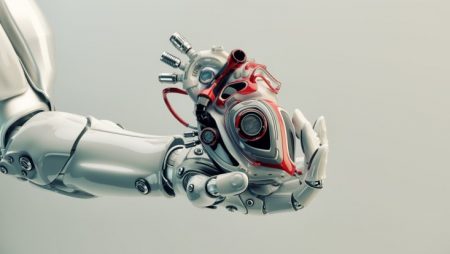September 14, 2018 – The following is the third posting to come from Jackie Roberson, a content contributor to the website Seek Visibility where she writes about technology, home life, and education. In this posting, Roberson talks about some of the biomedical breakthroughs that are occurring in 2018.
Much of Western medicine as we know it today has come from the work of dedicated biomedical engineers. Without engineering in the medical field, our healthcare professionals today would be working without the aid of imaging tools like X-rays and MRIs. Amputees would have only the most rudimentary prostheses, and the fight against cancer would long have been lost. That is because every year biomedical engineers are advancing the field of medicine.
This year is no exception. Just look at some of these astounding breakthroughs that have been made promising even greater success in the future.
Neural Engineering
Thirty years ago, neurologists were working in the dark, almost literally. Even just a decade ago, the tools doctors and scientists used to understand the brain and its diseases were rudimentary. But in just a short period of time, biomedical engineering has provided neurosciences with imaging tools that end the need to crack open the skull to unravel the secrets of our human mind.
Non-invasive technologies such as electro-sensors today can be placed strategically on the scalp to study the brain without harm to the patient. Through data collected using these tools, scientists have discovered how to apply electrical impulses to stimulate different areas of our brain and to read neural impulses the brain sends that the body fails to receive.
One example is Silent Speech, a technology that reads the brain’s inner thoughts and turns them into typed output. Mark Chevillet, a neuroscientist has been working at Facebook’s advanced-technology center, developing what could allow a “locked-in” patient to communicate at speeds of 100 words per minute, 20 times faster than previous brain-machine interfaces.
Bio-robotics
As a direct result of progress in neuroscience when combined with advancements in robotics, the field of biorobotics is increasing the ability for humans to use their minds and nervous system to animate robotic devices. Engineering hopefuls who wonder what you can do with a biomedical engineering degree are no doubt familiar with the field’s close ties to prosthetics. Today sensor-laden prosthetics can receive electrical impulses from a wearer’s brain and follow the instructions turning neural activity into complex movement whether it be in a hand, arm, or leg.
Gait Analysis
Robots are also increasingly being applied to cases of motor control rehabilitation, usually after a stroke or debilitating injury. A machine called the Lokomat is a robotic exoskeleton that assists patients to relearn how to walk and even run. Partly controlled by patients and partly by therapists, the Lokomat shows promise in helping rehabilitate patients, making them ambulatory much faster.
Biomedical engineers have made great strides in doing gait analysis to assist their work with the Lokomat and similar robotic assist devices. The Motion Analysis Laboratory established by the MORE Foundation uses eight infrared cameras to track the movement of children as they walk. Computers analyzing the cameras’ data can determine the movement of bones and the force exerted. This understanding of how individuals and populations move helps doctors better diagnose problems with gait and allows them to develop more effective treatment plans.
Wearable Tech
Patients don’t always act naturally when being supervised by doctors or physiotherapists. In such cases researchers and medical professionals need a remote way to observe a patient’s health and behavior in an environment away from the hospital or clinic. This is where biomedical engineers have come in to develop wearable health technology which can come in many different form factors.
Bracelets, shoes, brassieres and more today are being fitted with smart sensors that collect data and transmit it using Wi-Fi, smartphones, or other digital devices to health professionals for analysis. Today the public has already bought into wearable fitness trackers, but wearable medical technology will take us to the next step introducing the ability to intervene when a patient’s vital signs broadcast to a tracking system to show an impending stroke, diabetic incident, heart attack, or other debilitating and life-threatening incidents.
Tissue Engineering
Prosthetics may be a good substitute when someone loses a limb, but no manufactured appendage can ever replace the real thing. That’s why biomedical engineers are investing time and effort into the field of tissue engineering. In true science fiction fashion, this is a solution that would give medical professionals the ability to replace a damaged organ, arm, or leg, with a brand new one grown from the patient’s own tissue.
Today we are seeing the first results of this new field with tiny hearts and livers grown in laboratories using a patient’s stem cells. There remain many challenges to this nascent technology with biomedical engineers admitting they have a long way to go. One of the challenges in re-engineering complex tissues like the skin, lungs, and liver is vascularization, the growth of the many blood vessels needed to enervate these organs. Advances in our understanding of stem cells and how they can be programmed to turn into other tissue types is one of two breakthroughs. The second is the ability of engineers to create scaffolds from inert materials that provide a framework for the stem cells to grow both the desired shape and provide the functionality required. The likelihood is high that we will soon see tissue engineering applied in real-world cases in the near future.















